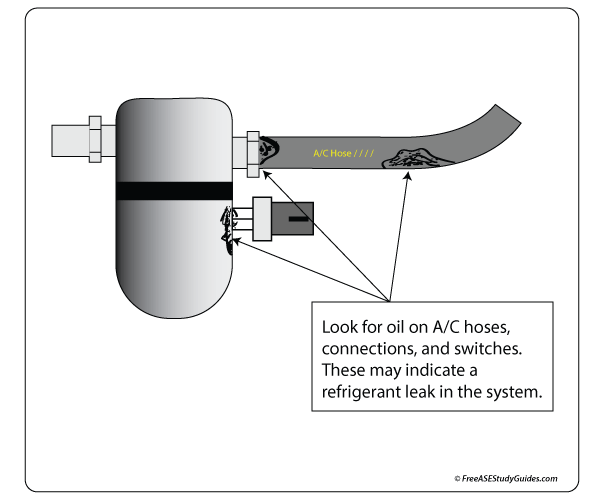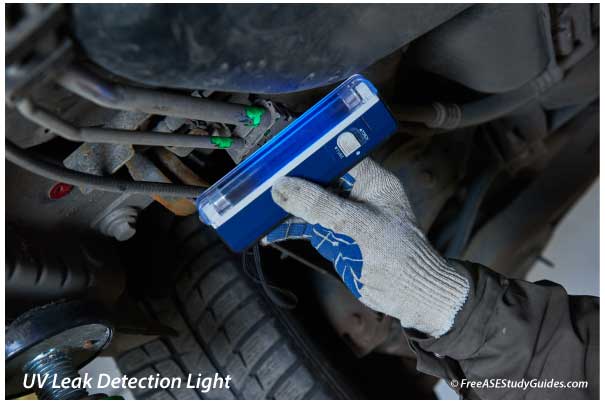A/C Refrigerant Leak Detection

An oily spot on an A/C hose can indicate a refrigerant leak. Proper oil levels are vital to system performance. If the level is too low, the compressor starves for lubrication. Heat exchange is affected if the level is too high, resulting in poor air conditioning performance. Replace the same amount of lost oil.

Refrigeration oil is mixed and distributed throughout the system in the refrigerant. If a leak has formed on an A/C hose, an oily spot collecting dirt appears. A refrigerant leak detector helps verify suspicions and ensures that it is not another fluid splashed onto the hose. Some oils contain dye that glows when illuminated with a UV leak detection light. The dye can also be injected into a system with hard-to-find leaks to aid in visual diagnosis.
Always use the manufacturer's specifications and recommendations when adding oil to an automotive air conditioning system. Today's 1234yf systems use PAG (polyalkylene glycol) of different viscosities. PAG has replaced the mineral oil used in older R12 systems. Use the oil that is recommended by the vehicle manufacturer. This oil is hygroscopic; it absorbs moisture from the air. Keep the lid on the container when in storage.